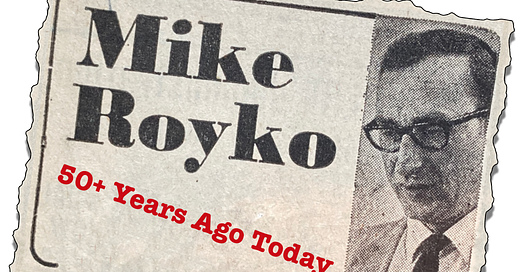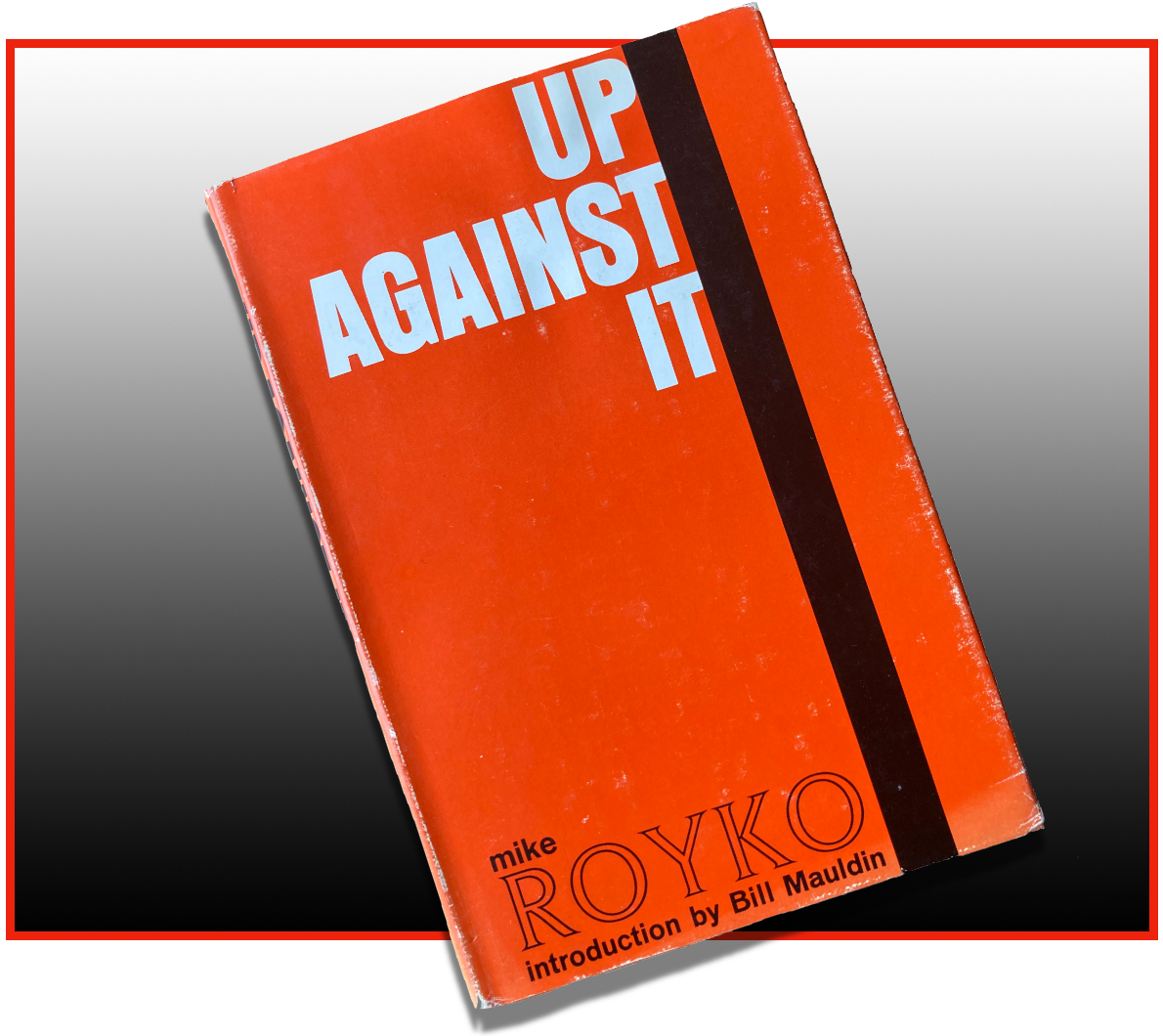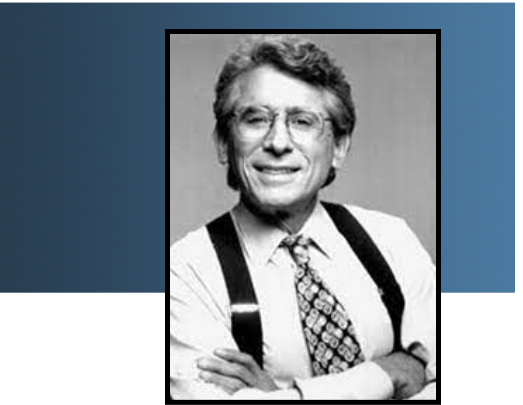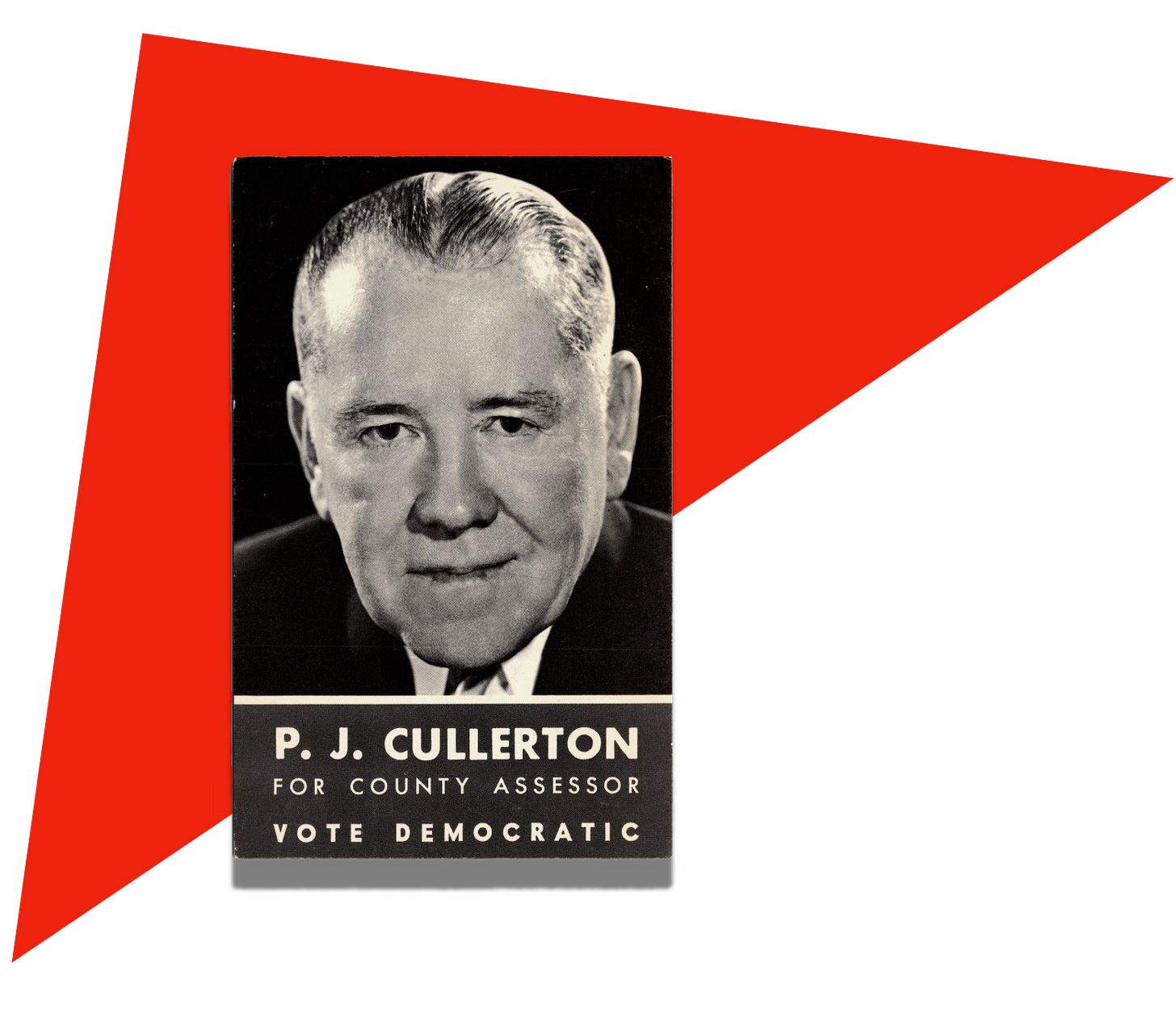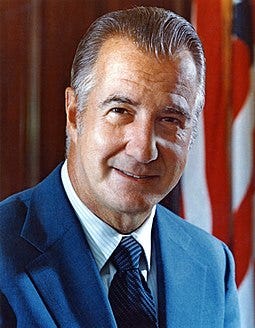Mike Royko 50+/- Years Ago Today: Mike and Walter and Insults, Oh My!
The Life and Death of High-Rise Man, Part Three
To access all site contents, click HERE.
Why do we run this separate item, Mike Royko 50+ Years Ago Today? Because Steve Bertolucci, the hero of the serialized novel central to this Substack, lived in a Daily News household—meaning the Bertoluccis subscribed to the Daily News. Back then everybody read the paper, even kids. And if you read the Daily News, you read Mike Royko.
This is Part Three of “The Life and Death of High-Rise Man,” a seven-part series on Mike Royko’s High-Rise Man columns mocking wealthy lakefront Chicagoans, and the life that led him to write those columns.
To skip the recap, scroll or click here for “Mike and Walter and Insults, Oh My!”
Part One: The Ascent of Royko traces Mike’s hardscrabble early life through the homes he lived in—and the life, in those homes, that led Royko to jeer wealthy lakefront Chicagoans in 15 columns spanning almost 20 years. Mike called this new species of well-to-do Chicagoans “High-Rise Man.” Then, in 1981, he surprised everyone by moving to 3300 N. Lake Shore Drive.
Part Two: The Birth of High-Rise Man covers Mike’s first High-Rise Man columns, taking time to savor two of the most essential.
Part Three: Mike and Walter and Insults, Oh My! [YOU ARE HERE] Mike’s High-Rise Man column on November 5, 1981 slams headlong into his lengthy feud with top Chicago TV news anchor Walter Jacobson. Here’s an initial look at Walter—and Mike and Walter—so the November 5 column will make some sort of sense to you.
See “Read the Rest” at the end for links to the rest of the series.
The Life and Death of High-Rise Man:
Part Three - Mike and Walter and Insults, Oh My!
Mike Royko’s November 5, 1981 column was a heady potion of his favorite ingredients: deciphering Chicago politics; complaining about High-Rise Man in its densest habitat along the Lincoln Park lakefront, then as now part of the 43rd Ward; making fun of TV news people; and insulting top local TV anchorman Walter Jacobson.
Younger Readers, you may not know that Walter Jacobson was one of the most successful Chicago television journalists of the latter half of the 20th century and the early 21st century. Jacobson became arguably Chicago’s single most well known and controversial local TV personality after he began anchoring Channel 2’s TV evening news in 1973, paired with equally iconic but not equally controversial Bill Kurtis.
Although Bill Kurtis is four years younger than Walter Jacobson, Kurtis played the serious, authoritative partner with Jacobson as the irrepressible upstart. Bill Kurtis is like the George Bailey of Chicago news—he was just born older.
Bill and Walter, as people would call them, eventually jacked Channel 2’s news ratings from the basement to first place, passing Ch. 7’s previously #1 Happy Talk news team, and Ch. 5’s serious newscast starring Floyd Kalber, previously a close #2.
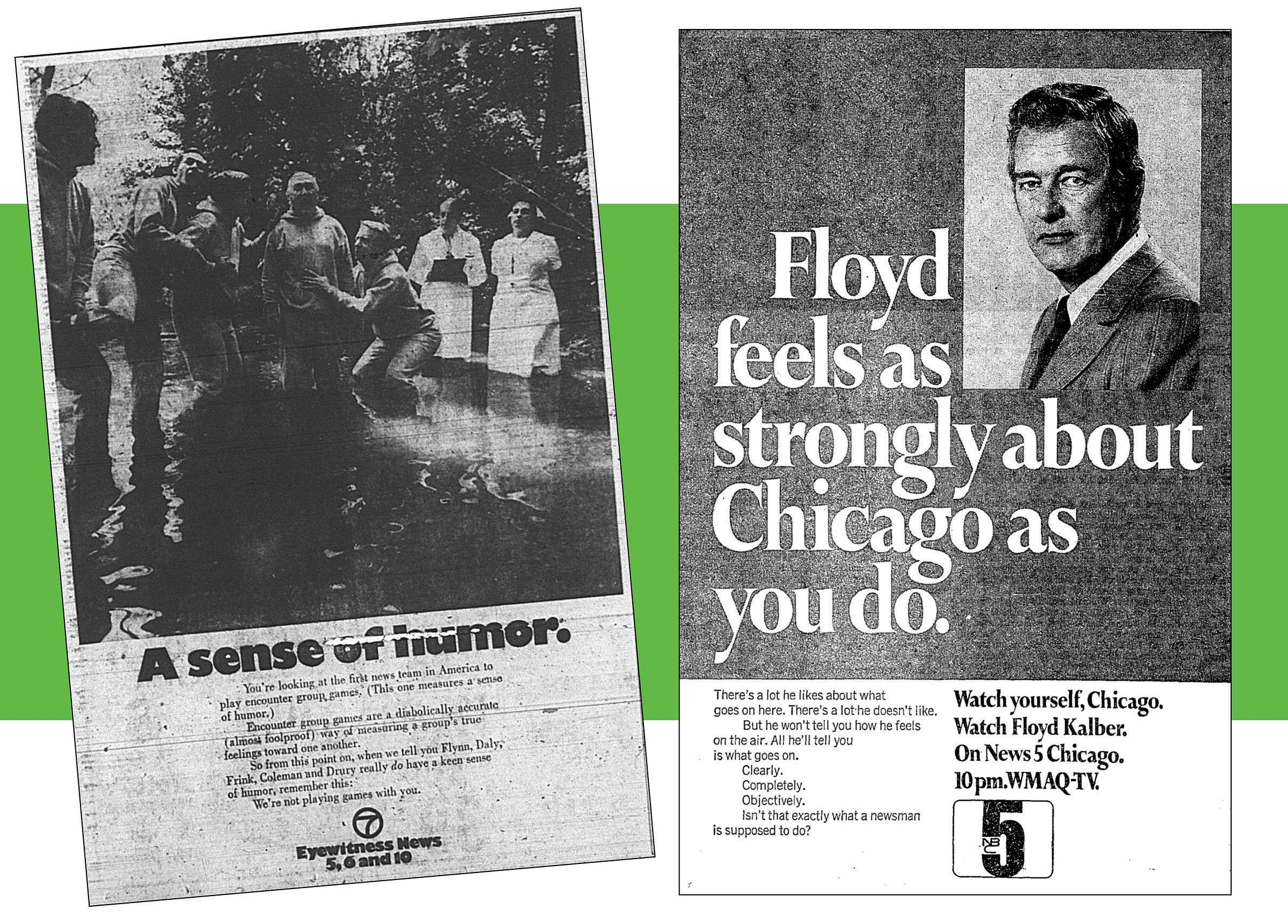
Channel 2 promos emphasized that Bill and Walter were real reporters, not just news readers. A then-new experiment emphasized that schtick by placing Bill and Walter’s anchor desk in front of the Channel 2 newsroom, with work at least supposedly going on behind them. I used to watch people in the background and wonder if they were really doing anything. I could never decide.
Nobody can stay #1 forever, of course. Bill Kurtis left for a few years in the ‘80s for network news, including co-hosting the CBS morning show. He would also form his own production company and narrate hundreds of documentaries, then pop up as the voice of “Wait Wait…Don’t Tell Me!” on NPR. Walter moved to Fox 32 News in 1993, staying until 2006. For 2010-2013, Bill and Walter reprised their anchor teamwork on Channel 2.
So Walter Jacobson was a major face of Chicago news almost nonstop for 40 years.
At 87 in 2023, Jacobson still provides a weekly commentary for WGN radio which airs during Bob Sirott’s morning show, Thursdays at 9:25 AM. It’s also collected and available on the station’s website, or as a podcast.
No one ever matched Mike Royko in print or otherwise, but if Royko had a TV equivalent, it would be Walter Jacobson. As far as I know—and I always welcome and implement corrections…
…Walter Jacobson was the only Chicago anchor who also delivered daily commentaries, the original Walter’s Perspective. I couldn’t find a Perspective from Walter’s early Channel 2 days, but this 1997 segment from Fox 32 gives you the classic Walter vibe. Scrappy. Rolled up shirtsleeves, looking out for the little guy, passionate. Royko used to make fun of Walter for his excitability, claiming Walter bounced while delivering his Perspectives.
Note: Joel Daly of Channel 7 also delivered regular if not daily personal pieces, I realized while talking with legendary Chicago media reporter Robert Feder after initially publishing this post—he had not been available during the writing. Joel Daly’s spots were different from Walter’s, though, Feder recalled: “They were essays. They were different from what Walter was doing….Walter broke news. Walter was out there.”
Jacobson’s controversial local profile grew from both his political, often in-your-face Perspectives, and his reportedly mercurial nature. He was big enough by 1977 for a lengthy Tribune Sunday Magazine profile. The Trib’s Clifford Terry uses Walter’s bad boy reputation as the skeleton for his story.
“His outbursts in the Channel 2 newsroom have become as predictable as spitball-tossing in the Channel 7 newsroom,” Terry writes early on, giving a few examples and adding more provided by Walter himself:
“You missed another one,” Walter told Terry several weeks into their interviews. “Last night I broke the door to the newsroom. It had to do with my having to do promotions and being dragged around like a robot. I opened the door with a little more ‘strength’ than I should have, and it crashed against the wall and the molding fell off.”
Walter Jacobson is a fascinating mix. He’s one of the most successful Chicago journalists of all time, in ratings and awards, yet he was the most likely to get ribbed by colleagues. That’s not counting Royko, though Royko’s jibes may have spurred others on.
No doubt envy played some part. Walter brought some of it on himself, for instance by often complaining publicly about his salary. That certainly bugged Royko, who made a star salary but only by newspaper standards. According to a Daily News feature on Chicago celebrity salaries, in 1974 Mike made $51,000 while Walter made $55,000, just a year into anchoring the news. By 1977, Walter’s salary had jumped to $110,000—almost $600,000 in 2023 money. The big money pulled down by the newly ascendant TV news people was galling to their print colleagues, definitely including Mike Royko.
In 1978, Royko wrote an entire column about 41-year-old Walter’s latest salary complaint, at which point Jacobson was making $140,000—almost $700,000 in 2023 dollars:
I checked in with seminal Chicago Reader press critic Michael Miner for context.
“You know local news was by and large ridiculed by print journalists, anybody who envied the money those guys were making and the notoriety they enjoyed,” Miner told me. “A lot of it was jealousy, it was inevitable, and Royko certainly made that acceptable. He put Jacobson on the radar as a figure of ridicule. Is it fair? Well, ridicule is probably never fair, but who made more money?”

Walter Jacobson’s career pièce de résistance, for fans and critics alike, is surely his 1991 “Mean Streets” series. Channel 2 make-up artists transformed Walter into a homeless person for 48 hours spent outside during a frigid Chicago winter. Walter wandered the Loop and, of course, Lower Wacker Drive.
Mike Royko insulted, ridiculed, lambasted and needled Walter Jacobson in 17 columns in the Daily News—starting in 1967, ironically the same year he created High-Rise Man. Mike kept it up with a whopping 29 Walter mentions during his Sun-Times years, 1978-1984; and 16 during his time at the Tribune, 1984-1997.
That’s 62 columns containing Walter Jacobson’s name or one of Royko’s nicknames for him, such as Walter Babytalk. And I may have missed some columns containing a fleeting nickname I forgot to search.
Sometimes Walter Jacobson has something to do with Mike’s subject matter over those 62 columns, but usually Royko pulls Walter out of nowhere to lob a gratuitous jeer. Royko’s swipes at Walter average out to almost 2.5 per year, over 28 years. It could have been more, but Royko wrote his last Walter Jacobson dig in 1995, two years before Mike’s death.
Even Walter Jacobson was shocked at the sheer volume when I told him on the phone recently.
“Really,” he marveled.
Unfortunately, Walter didn’t have time for a full interview. If I get more time with Walter later, I’ll circle back to update—with an alert to subscribers. You can always subscribe for FREE right here:
As far as I know, I’m the first one crazy enough to count Royko’s Walter Jacobson mentions. If anyone else approaches Walter’s Royko record, it would be the real Mayor Daley. According to Richard Ciccone’s biography, Royko: A Life in Print, Daley’s name appeared in “less than 100” Royko columns from the year he started writing, 1963, until Daley’s death in 1976. One of these days, I’ll go calculate the actual number. For now, we’ll let the Boss take first place, and Walter can have second.
The main question, of course, is:
What did Mike Royko have against Walter Jacobson, anyway?
While it’s an open question as to how seriously Royko took the feud, it wasn’t a Fred Allen-Jack Benny thing, or Jimmy Kimmel-Matt Damon.
“They were not on friendly terms, it was a real thing,” says Judy Royko. “Mike was not putting that on….Mike did not feel competitive with Walter, he just didn’t think feel Walter had lived up to his reputation. Mike really didn’t talk about Walter much, at all.”
We’ll explore that further along with other points in the coming Mike-Walter post, but here’s Walter’s story of how the feud began from his 2012 memoir, because it’s a doozy.

Mike and Walter both started in Chicago papers in the late ‘50s-early ‘60s, as the Front Page days were fading but emphatically not over. Learn more about that in this site’s “Chicago Newspapers Circa 1972” chapter. Old school reporters often viewed each other as true enemies back then, an attitude Royko never completely dropped. Royko and Jacobson both worked stints at the legendary City News Bureau before landing with a big daily—Royko at the Daily News by 1959, Jacobson at the scrappier and still somewhat disreputable Chicago’s American the following year.
Walter’s berth at the American threw him in with the most legendary Front Page reporter of all time: Harry Romanoff, commonly called “Romy,” then in charge of the city desk. This is the guy who called Richard Speck’s mother during the early hours of reporting Speck’s horrendous 1966 mass murder of eight student nurses on the South Side. Romy pretended he was Speck’s attorney to get the full story of the killer’s troubled life.
Walter hung around Romy and observed the master at work.
“Harry's skills were sharpened in the foxholes, and they dropped my jaw,” writes Walter in his memoir. “I took notes on the people he called, what he said, and how he asked questions. Some of the notes I memorized, others I kept on paper. And during my many years in the game, I squeezed from them techniques that earned me good stories. Exclusives.”
Royko fans will recall that Mike used some Front Page techniques early on himself, such as his work reporting for City News Bureau on the notorious 1956 murders of the Grimes sisters. Mike got a shiny silver star badge at a dime store and posed as a coroner’s investigator to interview the Grimes’ neighbors and others.
Walter Jacobson put Romy’s influence to work when he started covering the Cook County beat in the early ‘60s, sharing a press room in the County Building with the Daily News’ County reporter, Mike Royko.
One day, Walter relates in his memoir, he was alone in the press room during lunch when Cook County Assessor Parky Cullerton walked in with a stack of press releases.
“Taxes goin' up. Pass these around, okay?" Parky told Walter, and left.
Walter knew a scoop when he saw it. He stuffed the press releases in his pocket and bolted back to the American’s press room to write the story, looking forward to beating Royko and the Daily News by a full news cycle.
“I know Royko would do exactly what I'm doing exactly the same way,” Walter writes in his memoir. “Nonetheless, when he finds out, he's incensed—which is not a good thing, Mike Royko being incensed. His personal edge is no less jagged than the edge of his column, and he doesn't, or maybe can't, keep it in check. He bounds up the stairs to rail on Assessor Cullerton, who is not to blame, and he sticks me into his craw, and will keep me there for twenty years, occasionally, as you'll see later, spitting me into his columns with anger or sarcasm.”
Is this hilarious anecdote the real kindling for the Royko-Jacobson feud?
Why not. I’ll buy it. There’s no competing story that I could find.
Fast forward five or six years to 1967. Royko’s been writing his column for four years. He’s already the top dog in town when he simultaneously begins his annual Cubs fan quiz and razzing Walter Jacobson.
It all starts innocently enough.
“Name two radio or television figures in Chicago who were Cub batboys,” Mike challenges his readers.
Answer: “Vince Garrity and Walter Jacobson. Garrity said the experience was wonderful and started him on his remarkable career. Walter Jacobson says it wasn’t much fun because some players threw underwear at him for laughs.”
Royko stepped it up in 1968 with an updated quip: “Now that he is a newscaster nobody throw underwear at him, but they should.” Royko repeated the same Q & A in his 1969 and 1971 Cub quizzes. (He didn’t do a 1970 quiz unless the digital archives are deliberately hiding it.)
If you’re wondering, Vince Garrity was a local character and punchline. Read up on Vince in this Chicago History Rabbit Hole.
Mike updated his Cubs-threw-underwear-at-Walter joke for the 1972 quiz— “Now that he is on TV, nobody does that, except me.”
The 1972 version finally drew Walter out.
Walter is kidding here. It’s clear from his 2012 memoir and various interviews that he’s always appreciated the publicity value of a good feud. And from 1967 all the way through 1972, publicity from star columnist Mike Royko would have been priceless for Walter Jacobson. Walter was working in TV at this point, but he wasn’t an anchor. He was just another TV reporter.
Other clues that Walter is kidding around: He’s riffing on the real Mayor Daley blowing up at critics, paraphrasing Royko’s favorite way to describe those blowups, when he writes, “That’s all he [Royko] ever does is criticize. What constructive ideas has he ever planted? What major league teams has he ever helped?”
Compare with Royko, in 1971’s “Boss”: “If provoked [at a City Council meeting], he’ll break into a rambling, ranting speech, waving his arms, shaking his fists, defending his judgement, defending his administration, always with the familiar ‘It is easy to criticize…to find fault…but where are your programs…where are your ideas…’”
ADDITION: Best-selling Chicago author Rick Perlstein, who has chronicled latter 20th century conservatism in four fascinating books so far including “Nixonland” and most recently “Reaganland,” naturally noticed within minutes that I should have also mentioned another source for Walter’s phrasing: “‘What trees do they plant?’ was what Daley said about the '68 convention protesters, and was the name of the propaganda film his administration produced to defend the city.” Look what classy readers we have here.
It won’t embed but you can watch Daley’s hour-long propaganda film here at Media Burn.
Later, Walter’s letter references then-Vice President Spiro Agnew when he writes, “It’s also pusillanimous pussyfooting by a nattering nabob of negativism.” By this date in 1972, Mike has often referenced Agnew’s famous, and famously mocked, alliterative quote from a 1970 speech attacking Nixon critics, aka the press. The speech was written by Nixon speechwriter William Safire, later a long-time New York Times columnist. Here’s the quote:
“In the United States today, we have more than our share of nattering nabobs of negativism. They have formed their own 4-H club—the hopeless, hysterical hypochondriacs of history.”
Walter’s Agnew reference could be an olive branch, or a swipe. Because Mike really hated Spiro Agnew. See Mike’s November 19, 1971 column on Agnew’s Chicago visit, when Agnew mocked people on welfare.
Until Mike’s November 5, 1981 column, that 1972 letter to the editor was Walter Jacobson’s only public response to Royko—even though as you’ll see, Royko’s jibes at Walter sometimes became meaner and more pointed as the years went on.
The November 5 column would be a tanker truck of gasoline for the Royko-Jacobson feud.
Don’t miss the news from 1972, week by week! Start with the first post here.
Read the Rest!
Mike’s November 5, 1981 column appears to be a very hot take on the independent lakefront liberals of the 43rd Ward, especially Ald. Marty Oberman and his constituent Walter Jacobson. But it’s really about Richard M. Daley’s successful 1980 campaign to move up from state senator to Cook County State’s Attorney. We’ll give you a backgrounder on the politics and examine the sizzling November 5 column. Careful not to burn your fingers.
Part Five: The House on Sioux Leads to Lake Shore Drive
Mike and his first wife Carol moved their young family into a darling house in Edgebrook. That house encapsulates why Mike would always identify with poor and working class Chicagoans, and scoff at wealthy lakefront residents as “High-Rise Man.” Mike’s departure from Sioux Avenue shows us what always made him tick—and finally drove him to a big condo on Lake Shore Drive.
Walter Jacobson struck back soon after Mike’s November 5, 1981 column, instigating a monumental front-page Royko High-Rise Man column on November 22 that doubles as a 1980s Chicago time capsule—and essentially ended the High-Rise Man concept. Here, we prepare for that moment of truth by examining how the paths of Mike and Walter crossed and re-crossed through the middle decades of the 20th century—and then observe their biggest collision.
Part Seven: The Last High-Rise Man [NEXT]
Because there’s so much fascinating material to cover in Part Six leading up to Mike’s November 22, 1981 column answering Walter Jacobson, that 1980s time capsule of a column gets its own post here.
High-Rise Man Addendum: Bill Granger Weighs In [COMING]
A few months after Mike and Walter’s dust-up, Tribune columnist Bill Granger revisited the issue in his own indelible way. To Granger, the question is: Does your past world disappear? You know what Faulkner said. Granger covers this age-old debate from a Chicago perspective.
By the way, this feature is no substitute for reading Mike’s full columns. He’s best appreciated in the clear, concise, unbroken original version. Our purpose here is to give you some good quotes from the original columns, plus the historic and pop culture context that Mike’s original readers brought to his work. Sometimes you can’t get the inside jokes if you don’t know the references. Plus, many iconic columns didn’t make it into the collections, so unless you dive into microfilm, there’s riveting work covered here you will never read elsewhere.
If you don’t own any of Mike’s books, maybe start with “One More Time,” a selection covering Mike’s entire career which includes a foreword by Studs Terkel and commentaries by Lois Wille.

